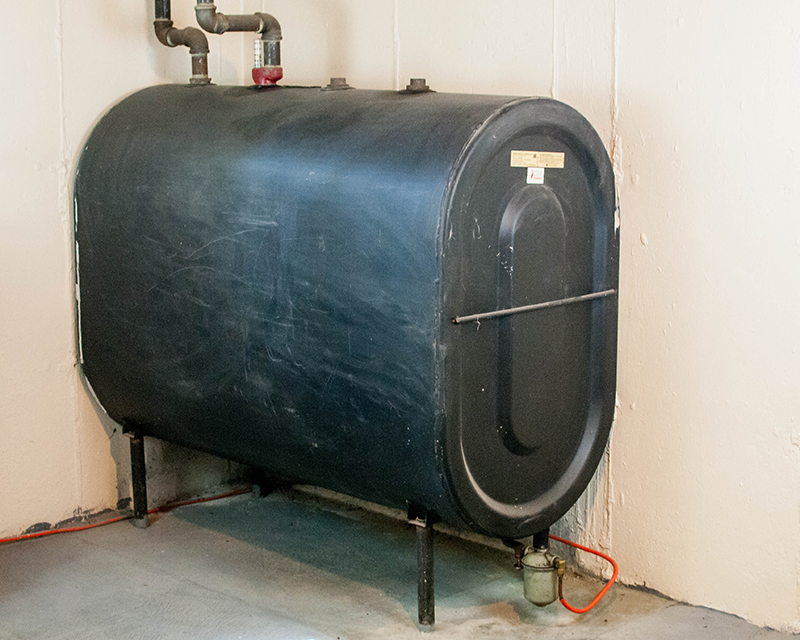Most homeowners can feel the hum of their furnace soothing during cold winter nights. The oil tank, which is the unnoticed hero of the furnace, often is not noticed until a problem arises. But proactive maintenance, like oil tank replacement, is crucial for your home’s safety and efficiency. We’ll take a look at the subject of replacement costs for oil tanks to help you navigate this essential investment for your home’s well-being.

Oil Tank Maintenance is Important: Prevention is the key to success.
Many homeowners overlook the importance of maintenance for their oil tank. Yet, a functional oil tank is crucial to the infrastructure of your home. It is vital that, as a responsible owner of a home make sure that your heating system and storage tank for oil are operating optimally and in a safe manner. A small oil spill can become a huge financial and environmental problem in the future.
Understanding Average Costs: A 275 Gallon Case Study
It is vital to get the right information when budgeting for home maintenance projects. Let’s take a look at the average cost of replacing an oil tank that is 275 gals which is a standard size for heating systems used in residential homes. The typical cost is $3,600 for states like Massachusetts, New Hampshire and Connecticut. Note that the price quoted assumes a straightforward replacement in a basement, or outside location that has no access issues.
The value of an oil tank replacement is far greater than price tag
Although the initial expense of replacing your oil tank may seem significant, it’s crucial to consider it an investment in the long-term safety and security. Here’s why:
Safety First: Oil tanks that are degraded can leak and can cause burning. They can also lead to pollution to the environment. Replacing your tank eliminates the risk and provides peace of mind for both you as well as your loved ones.
Maximum Efficiency: As time passes older oil tanks will lose efficiency and require frequent oil deliveries to maintain heat. The newer tanks run at the highest efficiency, and could lower heating costs in the long-term.
Peace of Mind for Many Years to Come: A brand new oil tank will provide many years of reliable service and eliminates worries about unexpected breakdowns or leaks in winter’s harsh months.
Oil Tank Replacement Costs: What factors influence them?
The $3,600 average price for a tank replacement of 275 gals serves as a rough guideline. Several factors can affect the final cost:
Tank Size Cost of replacing larger tanks is higher than the cost of smaller tanks.
Tank Location: Removing the tank that is buried and reinstalling it can be more costly than doing so in a crawlspace or basement that is easy to access.
Accessibility Issues When the tank is hard to access due to structures surrounding it or narrow spaces, labor costs for removal and the installation will go up.
The proper disposal of an old tank may lead to additional costs.
Create a plan for your home’s future Planning to replace the oil tank
Oil tanks generally last between 15 to 30 years, depending on various factors. Knowing the approximate age of your tank allows you to budget for the replacement of your tank before any issues arise. Consider scheduling a professional inspection to evaluate the condition of your current tank and get a more precise estimate for the replacement.
Insuring Your Home’s Safety and Sustainability
Oil tanks are not just a way to maintain warmth and comfort, but also an investment for the earth. Tanks that are older can leak and contaminate soil and groundwater. Modern oil tanks follow stricter environmental guidelines, which ensures responsible oil storage while minimising environmental damage.
Knowing is Power: Taking the reins of your home’s well-being
Knowing the costs of replacing your oil tank helps you make informed choices about your home’s upkeep. If you prioritize proactive replacement of your tank to ensure you have a secure and efficient as well as environmentally responsible heating system for many years to in the future. Don’t be astonished by an oil tank issue during winter. By planning and budgeting for this crucial home maintenance project you will be able to enjoy peace of mind while staying cozy and warm throughout the coldest of winter months.